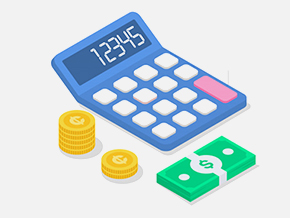-
- PCB TYPE
- PRINTED CIRCUIT BOARD PROTOTYPE ALUMINUM PRINTED CIRCUIT BOARD R&F PCB FPC HIGH FREQUENCY PCB HIGH-TG PCB HEAVY COPPER PCB HDI PCB PCB FOR LIGHTING METAL CORE PCB
time:May 13. 2021, 14:05:21 Views:209
For medical equipment, surface mount technology works best. The main advantages of SMT in PCB proofing design include:
Contrary to the through-hole method, it can simplify the automation process
It is much cheaper than the through-hole method
It takes up less space, so it is very useful in a miniaturized world
For most medical devices that require constant motion, SMT is a more suitable choice.
How to make BGA soldered on PCB perfectly in SMT patch
Since the BGA (Ball Grid Array) solder balls are hidden under the main body, it is difficult to check its performance. So far, automatic X-ray inspection has been applied to help expose defects of BGA solder balls, including voids, shifts, bridging, cold soldering, etc. Once a defect is found, it must be reworked. However, rework always costs a lot of money, which is definitely not required by OEMs. Therefore, the most important thing is to ensure the quality of BGA solder balls by effectively preventing the occurrence of solder defects. Therefore, this article will discuss the key elements to be captured in the SMT placement process.

BGA welding mechanism
When the solder is heated to a temperature above its melting point, the oxide layer on the copper surface of the pad is cleaned under the action of the flux. At the same time, the copper surface and metal particles in the solder can be fully activated. The molten solder will be wetted by the surface of the pad, and the surface of the pad will be cleaned by the flux and cause a chemical diffusion reaction. In addition, IMC (Intermetallic Compound) is eventually generated directly on the surface of the solder and the pad.
How to solder the BGA to the PCB perfectly during the SMT assembly process
SMT assembly mainly includes the following steps:
• Solder paste printing;
•SPI (solder paste inspection) (optional);
• Chip installation;
• Reflow soldering;
•AOI (Automatic Optical Inspection);
•AXI (optional);
• Rework (optional).
In order to optimize BGA welding in the SMT process, necessary measures should be taken before and during the welding process. Therefore, the discussion will be conducted from two aspects: before welding and during welding.
Before welding,
A. PCB board preparation
First, the appropriate surface finish should be selected to meet the project or product requirements. There are several surface treatments available, and you should clearly understand the introduction and comparison of surface treatments. Some products are required to meet ROHS requirements, and the lead-free surface finish can be lead-free HASL, lead-free ENIG or lead-free OSP.
Secondly, PCB should be stored and used properly. PCBs should be vacuum packed, and the container should include a moisture-proof bag and a moisture-proof indicator card. The indicator card can conveniently and economically check whether the humidity is within the control range. You can see that the color on the card indicates the humidity in the bag and the effect of the desiccant. Once the humidity in the bag exceeds or equals the indicated value, the corresponding circle will turn pink.
The PCB should be baked and/or cleaned. You can bake on the PCB to prevent moisture from causing soldering defects. It can be baked for two hours at a temperature of 110±10°C. In addition, during the movement and storage of the PCB, the surface of the PCB may be covered by dust. Therefore, it is very important to thoroughly clean the PCB before assembly. Guangzhou Jujin Technology generally uses ultrasonic cleaners for mounted PCBs to ensure that they are completely clean. As a result, the reliability of the board can be greatly ensured.

Got project ready to assembly? Contact us: info@apollopcb.com



We're not around but we still want to hear from you! Leave us a note:

Leave Message to APOLLOPCB
